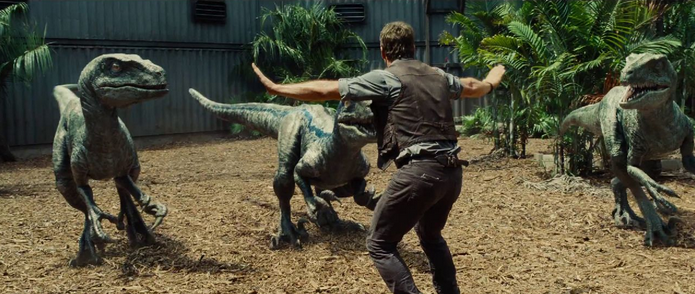Written by: Brandon Engel

By definition, clones are exact genetic replicas of an original organism. It can happen one of two ways: naturally, as in with identical twins or engineered in a controlled laboratory setting. Hollywood and pop culture tend to prefer the latter, whether human or animal, and generally relies on science fiction rather than scientific fact.
The concept of genetic manipulation in film and television go way back such as in Sleeper (1973) and The Boys From Brazil (1978) but recent examples have also made their way into our current culture. Jurassic World explores the consequences of bringing back an extinct species while Orphan Black delves into the complex world of human cloning. As fascinating as it is, the process of genetic engineering is often portrayed negatively, as with “evil twin” tropes seen everywhere on television.
Regardless of how negatively cloning is portrayed in popular media, the theme of using clones to bring back extinct species, as shown in Jurassic World and the Jurassic Park series translates into real conversations and possibilities in the scientific community. However, members of this same field are quick to point out that it is much easier and more viable to use such technology to bring a species back from the brink of extinction than to actually re-populate an already extinct one, particularly one that has been extinct for long periods of time.
Sadly, dinosaurs probably will never coexist with humans but what about human cloning, such as the many varieties of the main character in the currently running television show Orphan Black? As any parent of identical twins can likely tell you, having identical genetics does not mean identical personalities. Environment and upbringing also have a tremendous influence on each child’s personality as they grow. This concept is one that Orphan Black portrays very well, while also raising awareness of ethical and moral implications of cloning human beings.
The show explores such ethical considerations of cloning as whether the clones would ultimately be individuals or property and who would own or control the genetic coding involved. Human cloning for the sake of seeking cures for disease or study of the role of genetics in certain conditions seems noble, but what about cloning humans solely for organ harvesting? The possibility of noble intentions being twisted into something less moral and ethical is sadly all too likely, another theme that Orphan Black does not shy away from.
Such implications of cloning have been explored in film prior to these two examples, with films such as The Boys of Brazil exploring the issue of clones who are unaware of their clone status and who are pawns for a greater political agenda. In The Boys of Brazil, Nazi sympathizers are found to have created several clones of Adolf Hitler in the hopes of creating a Fourth Reich, something that the majority of the rest of the world would (appropriately) like to avoid.
Pop culture aside, genetic manipulation, if used ethically and responsibly, could provide solutions for many modern day issues. Genetic engineering could aid in more sustainable agriculture in the face of landscapes that are changing as a result of climate change. This would prevent hunger and malnutrition if we were to ever encounter a significant food depletion in the future. Even cloning certain organisms would help to better our environment. Such is the case in California where redwoods are being cloned to prevent deforestation and in Ohio where gas companies are creating genetically modified bacteria to clean up oil spills.
Cloning and genetic engineering could play a vital part in both the environment and humanity’s well-being, no matter what the movies tell us. If used ethically and responsibly, we’d be able to live a more sustainable and healthy lifestyle. Although won’t be able to have our own dinosaur-themed amusement park or human clones walking around with us any time in the near future (if at all), there is a great possibility that we’ll be able to prevent hunger, climate change, and even extinction of certain plants or trees. And that sounds much better than carnivorous flying pterodactyl/tyrannosaurus rex hybrids.
—
Writer Brandon Engel has made a name for himself submitting film-related essays to various websites, and is a frequent contributor to PopcornMonster.com. For more of his work you can visit the following links:
My Bloody Valentine – 5 Horror Films for Heartless Romantics
The Blackest of Fridays: Top 5 Yuletide Viewing Oddities
John Carpenter: A Master of the Macabre









